Ever wondered how long can insulin be out of the fridge?
In this article we’ll cover insulin storage recommendations for both unopened and opened insulin. And we’ll address our question, “how long can insulin be out of the fridge” both when you’re at home and traveling.
This post is sponsored by SpotSee.

How long can insulin be out of the fridge?
Most insulin products are ok to be out of the fridge for about a month, whether they have been opened or not. After that amount of time though, most manufacturers warn that the insulin may not work as well as it should and may become less effective. Though some new research suggests insulin can be left out of the fridge for up to 6 months and not lose potency, as long as it stays at room temperature and doesn’t get too hot.
As someone who’s been living with type 1 diabetes for most of my life (and injecting insulin for that long as well), I recommend storing unused vials of insulin and insulin pens in the refrigerator. Then, remove your insulin from the fridge the day before you intend to start using it.
Sometimes, injecting cold insulin can be painful or uncomfortable so keeping it in the fridge will prevent it from going bad. But then, removing it a day early will ensure it is at room temperature before you begin to use it.
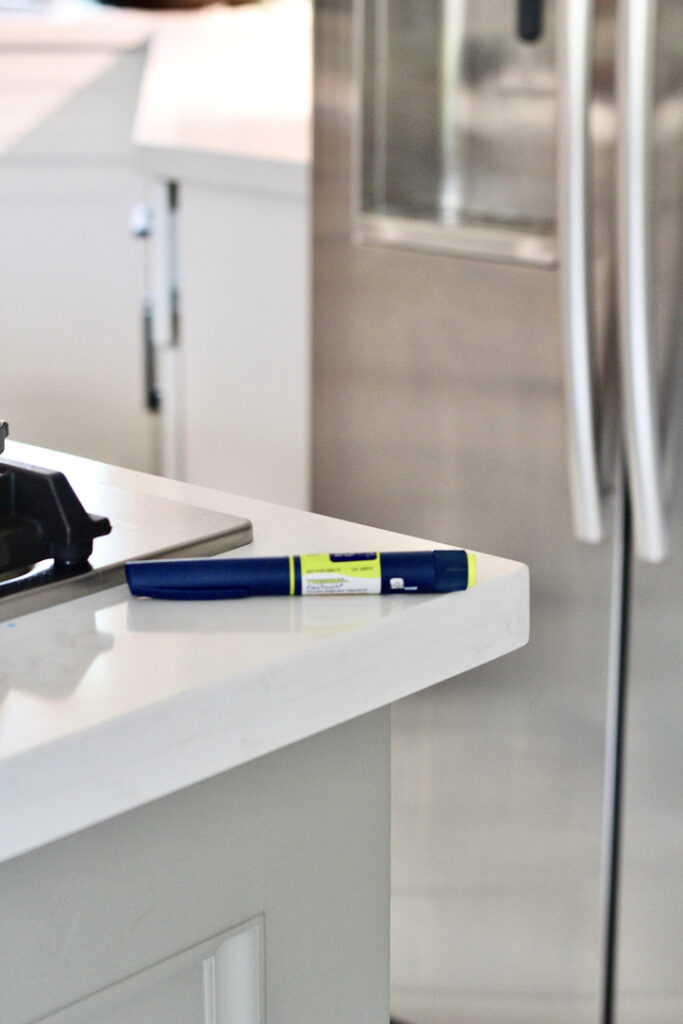
What temperature should insulin be stored at?
The temperature to store insulin at varies by type, brand, and whether or not it is actively being used.
Most insulins can be stored unopened in the refrigerator until the expiration date listed on the package.
Once opened, insulin vials can be stored in the refrigerator or at room temperature for about one month before they start to lose effectiveness.
But, insulin pens should not be stored in the refrigerator after being opened. They should be kept at room temperature once opened and in use.
And, regardless of if it is opened or not, insulin can only be kept at room temperature for about a month, before it will start to lose effectiveness.
I’ve put together an insulin temperature chart that makes it a little easier to understand…
Insulin storage temperature chart
| Length of time insulin can be stored | |||
| Unopened | Opened | ||
| Type of insulin | Room temperature (59°F and 86°F) | Refrigerator (36°F to 46°F) | Room temperature (59°F and 86°F) |
| Insulin vials | ~1 month | ~1 month | ~1 month |
| Insulin pens | ~1 month | Not recommended | ~1 month |
| Inhaled insulin | Not recommended | 1 month | 10 days |
| *For specific temperature and time instructions regarding insulin storage for a specific type of insulin, see the package instructions that come with your insulin. | |||
How to store insulin when you’re at home
Unopened insulin vials and pens should be stored in the refrigerator until they are ready to be used or until their expiration date.
I recommend keeping a small basket for your insulin in the fridge. Do not place this basket on the door of the fridge. Place it on a middle shelf.
- Storing insulin in the door of the fridge may expose it to frequent temperature changes every time the door is opened.
- Storing insulin in the back of the fridge may risk it getting too cold and freezing.
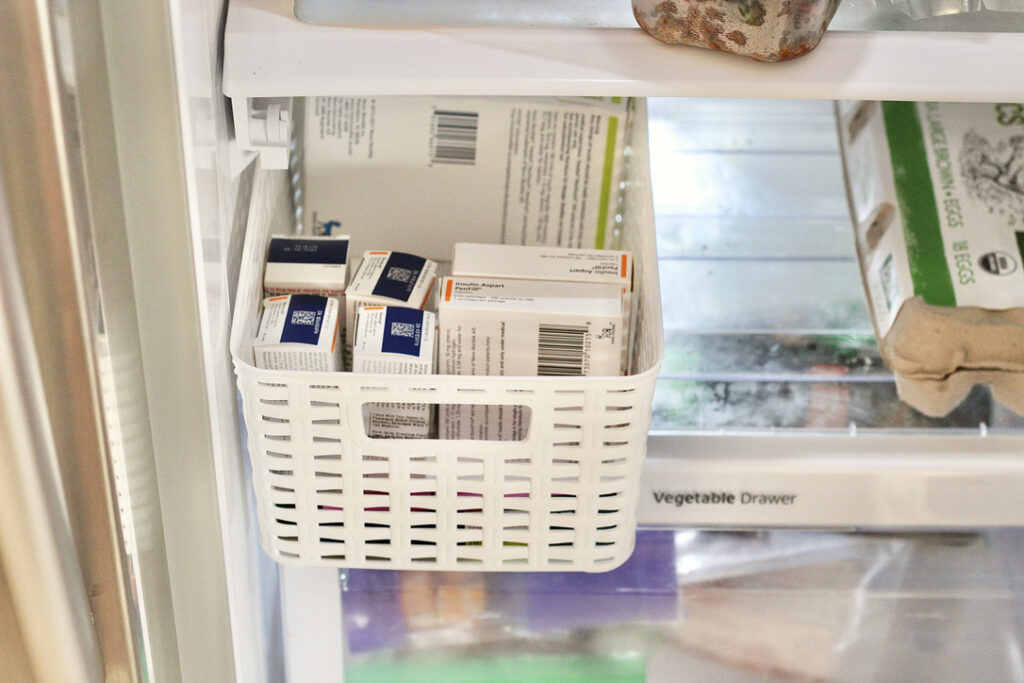
Can you freeze insulin?
Insulin should not be frozen. If you suspect your insulin has frozen, do not attempt to thaw it and use it. Discard the insulin and start a new vial or pen.
What if your insulin gets too hot?
When insulin is exposed to temperatures above 86°F, it can start to lose effectiveness. The longer it is exposed, the less effective it may become.
If no other options are available, insulin that has been exposed to high temperatures can still be used. But, it likely will not work as it should.
How do you know if your insulin has gotten too hot?
Unfortunately, there’s no way to look at insulin and know if it’s good or bad or if it’s gotten too hot. While some insulins that should be clear may appear cloudy when compromised, that isn’t always the case.
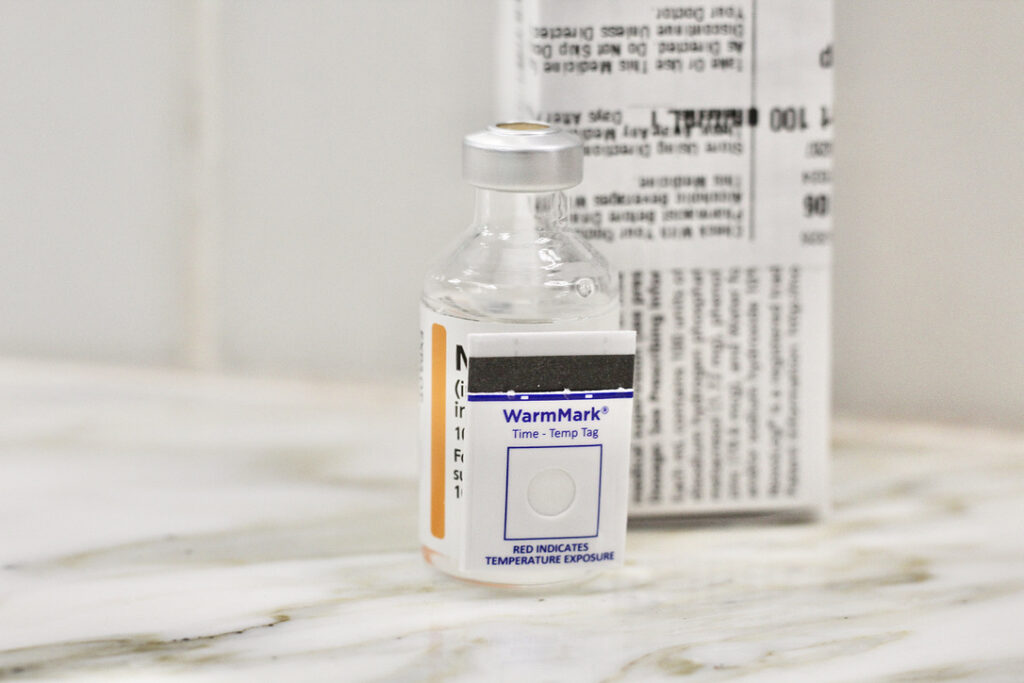
SpotSee TempMonitor indicators can help you know if your insulin (or GLP-1 medication) has gotten too hot. Simply stick an indicator to your insulin vial or pen, and if temperatures reach above 86°F, the indicator will turn red (see the photo below). This indicates your insulin has been compromised for up to 30 minutes and may not work as it should.

As someone who lives in hot weather for most of the year, SpotSee TempMonitors offer peace of mind to know if/when my insulin has gotten too hot.
How to store insulin outside when going to the beach or pool
I live in Houston, and pretty much anytime spent outside from about May-October is going to be above the recommended 86°F.
If you need to keep an unopened or unused vial or pen at refrigerator temperatures:
- Use a stainless steel tumbler (like a Yeti, Stanley, RTIC type cup).
- Place an ice pack inside or even just a layer of ice on the bottom.
- Wrap your insulin in a thin towel or several layers of paper towels
- Place the wrapped insulin in a plastic bag along with a SpotSee indicator.
- Stick this bag in the cup with the ice pack and place the lid on top.
If you are already using the vial of insulin or an insulin pen and just need to keep it under 86°F:
- Consider using a cooling pouch like this. (I’ve used this particular one every summer for the last few years with no issues.)
- The SpotSee indicators are especially helpful in this situation. Place one in a plastic bag so it doesn’t get damp and slide it into the outer sleeve of the cooling pouch.
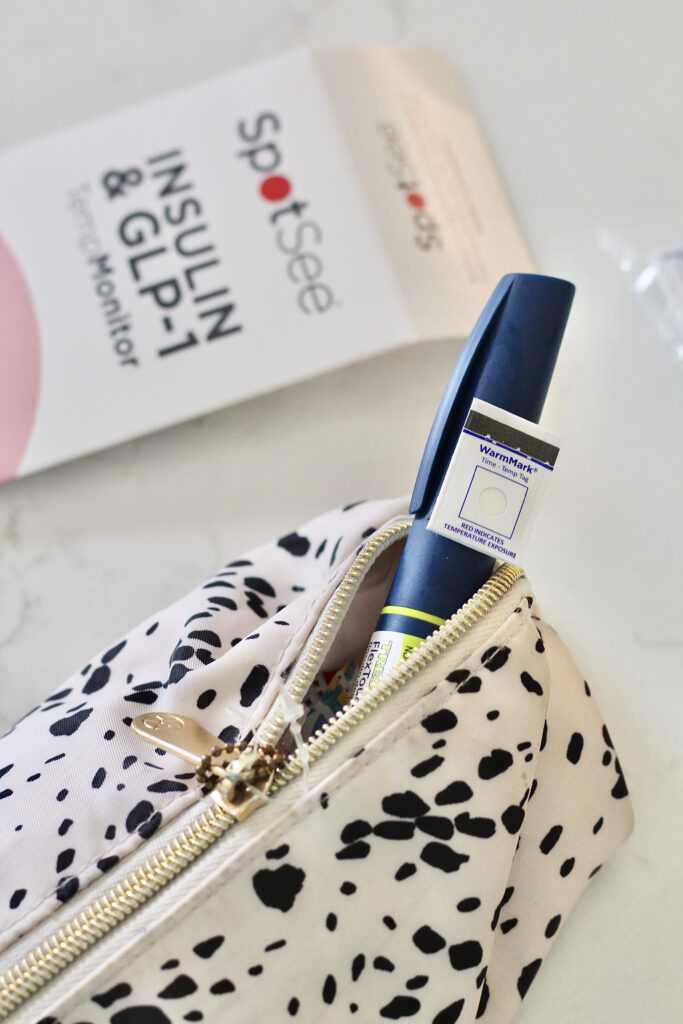
How to store insulin when traveling by plane
When you’re flying and need to bring insulin with you, there’s a whole host of things to consider. In addition to the tips we just discussed above, check out this post all about packing and TSA when you have diabetes.
How to store insulin in the car
Insulin should never be left in a car unattended, especially if temperatures are too hot or cold. Bring insulin with you when leaving your car, and follow the tips listed above.
What about the insulin in your insulin pump?
The storage instructions listed on your insulin and on your insulin pump may be different. Follow whichever guidelines are stricter.
In general, if your insulin pump is exposed to temperatures above 86°F for extended periods of time and you notice your blood sugars running higher, it is likely time to replace the insulin in your pump.
How long can insulin be out of the fridge? Key things to remember
When it comes to insulin storage, remember these key things.
1. Does insulin need to be refrigerated?
Yes, unopened insulin vials and pens should be stored in the refrigerator until they are ready to be used.
2. What happens if insulin is left out of fridge?
Most insulin vials and pens that are opened and in-use can be stored at room temperature for about one month and be just fine as long as they aren’t exposed to temperatures above 86°F.
3. How do you know if insulin has gone bad?
There is no set visual criteria for how to tell if insulin is bad. It’s best to take precautions to ensure your insulin has not gotten too cold or hot, and use tools like the SpotSee TempMonitor indicators.
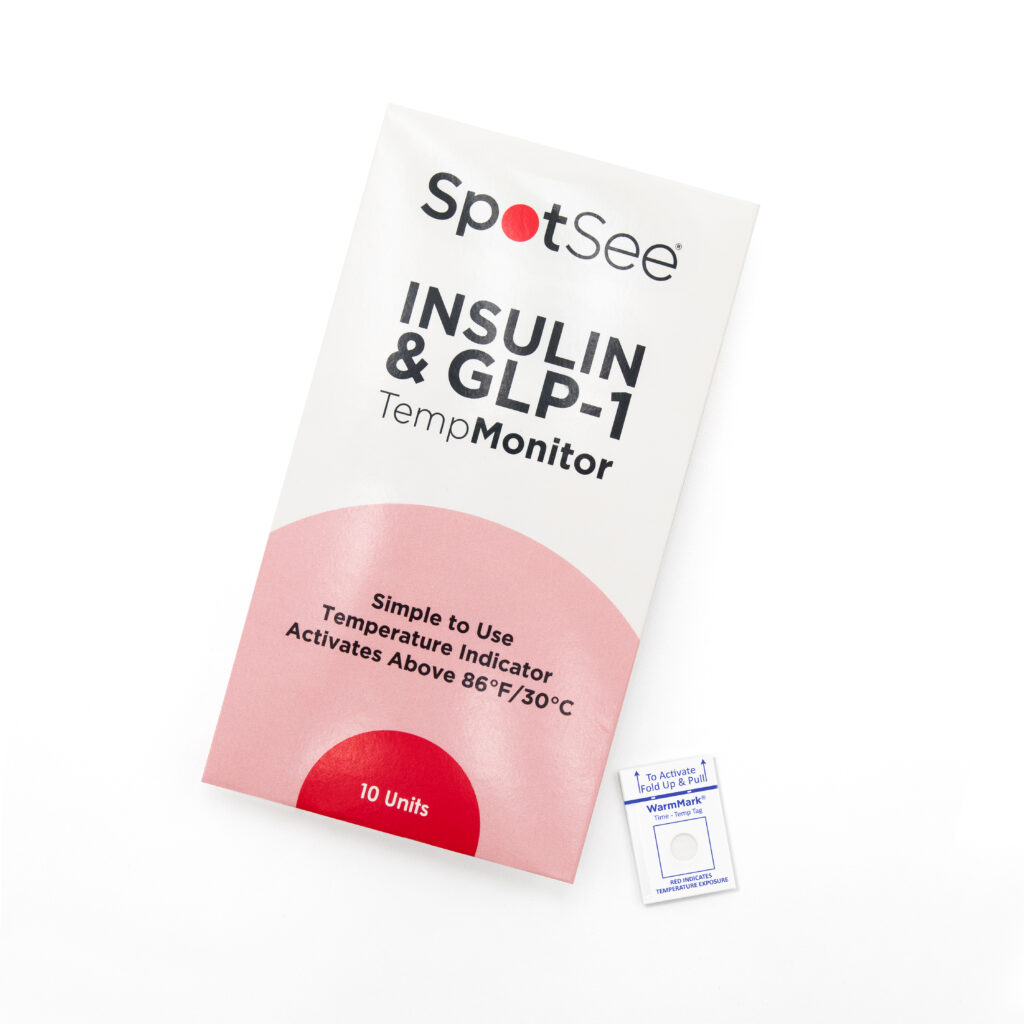
Sources
- Insulin Storage and Safety, American Diabetes Association.
- Storing Insulin, 2018, American Diabetes Association.
- Insulin, Cochrane Library.






